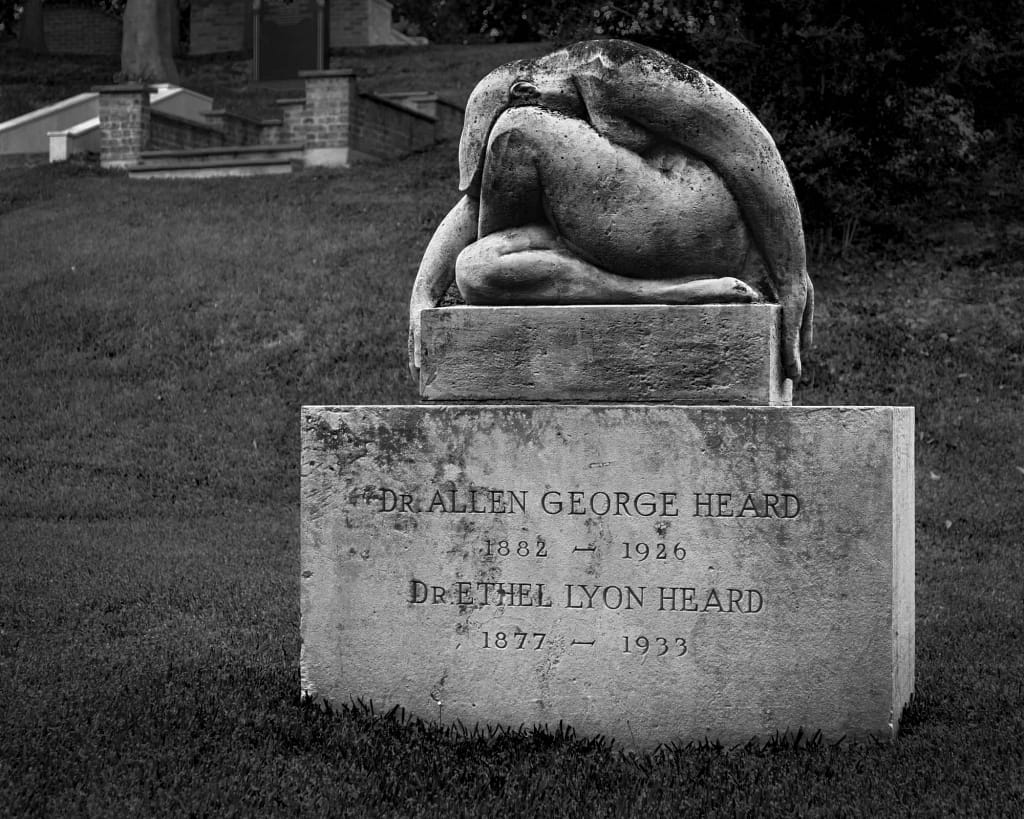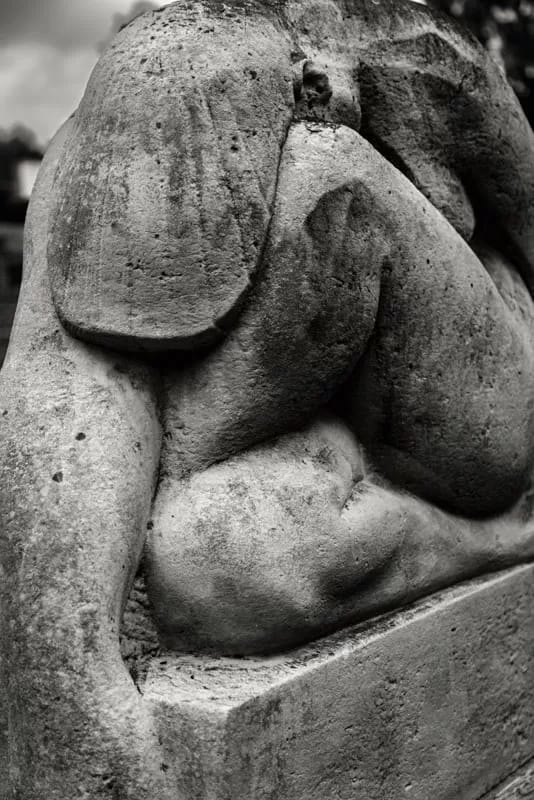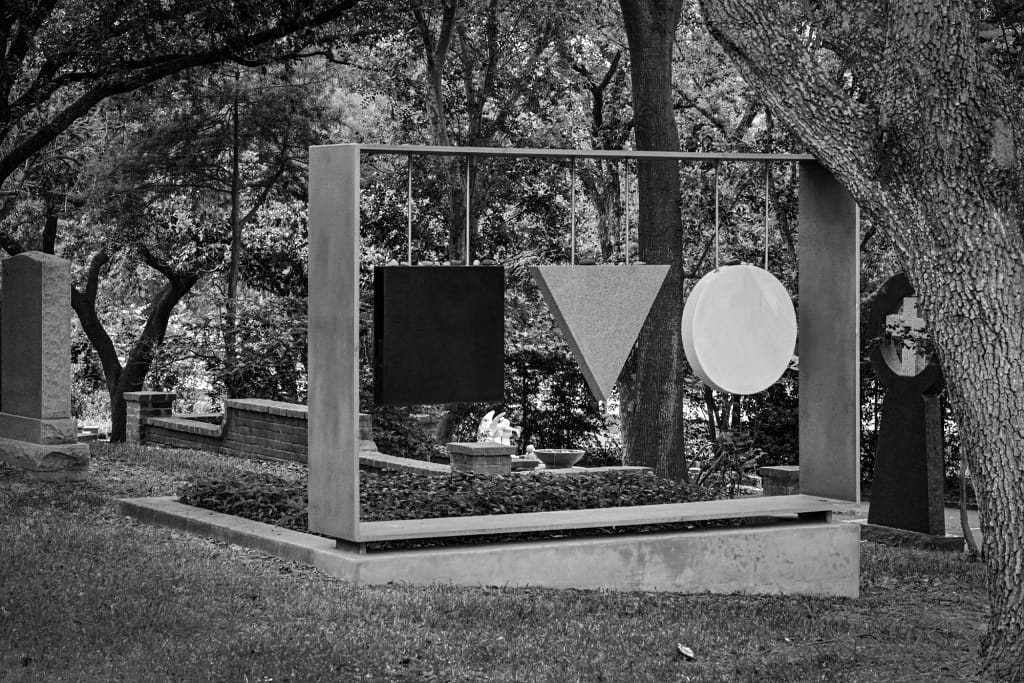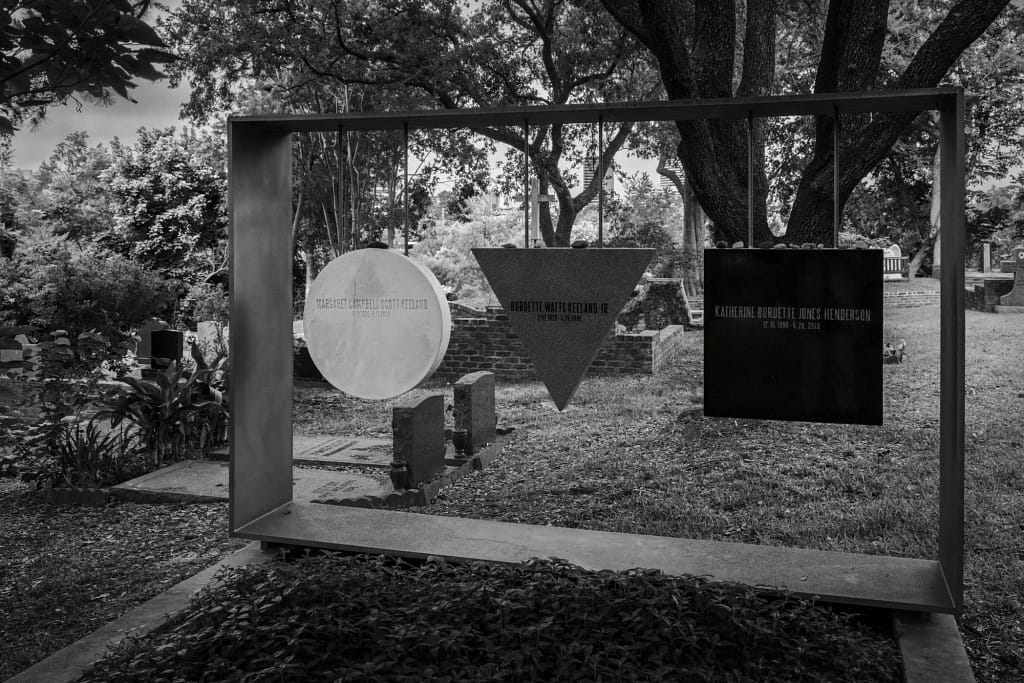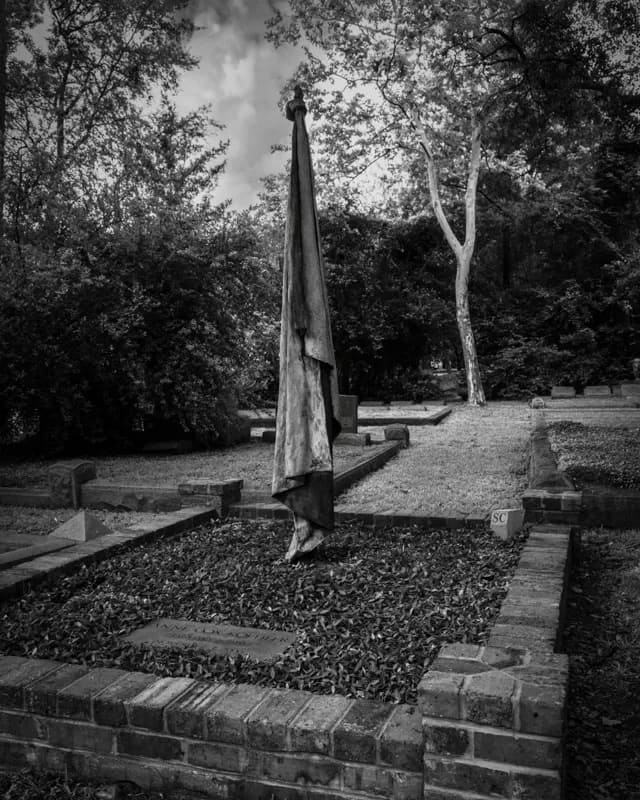Visual Epitaph
An epitaph on a tombstone is a brief inscription in memory of the deceased. Sometimes it is just a name and the dates of their birth and death. Sometimes there are brief descriptions of the deceased such as, “Loving Mother”. Occasionally, it will be about the feelings of those left behind about the deceased. For example, “You’ll always be in our heart.” You might also see information about what the person did or accomplished listing their jobs or titles – Engineer, Doctor, Judge, Senator, etc.
Additionally there is “cemetery art” which strives to serve as a visual epitaph. However, while beautiful and often emotional; cemetery art often fails as a visual epitaph. Cemetery art seems to follow strict but unwritten rules. These rules make the remembrance all about grief, religion, and often how successful they were. As a result, all cemeteries have a certain sameness, robbing the deceased of any individuality or recognition of what they were like as a person. How could their memorial differentiate them as a person, not their status, from everyone else? This is where a visual epitaph comes in.
Glenwood Cemetery
I love cemeteries and the emotions they convey. My favorite cemetery is Glenwood Cemetery, a historic Houston location. It’s a beautiful place filled with light and shadow, graves from the smallest to large estates, home to everyday people and the rich and famous. Over the past 12 years I’ve visited Glenwood 15 times and taken over 1,000 photos.
It was on my last 2 visits that I discovered some graves that didn’t look conventional; they flouted the rules. There was no “cemetery art” or religious symbolism. There was, however, true art used in a way the really represented who these people were and made me want to learn their story, a true visual epitaph. Out of the 16,000+ graves at Glenwood, I found 3 like this. So it’s a very rare quality but a beautiful one.
Solitude In Caen
During a recent visit, I noticed the grave of Dr. Allen George Heard (1882 – 1926) and Dr. Ethel Lyon Heard (1877 – 1933). Atop their monument is a beautiful stylized sculpture of a woman in a collapsed pose with her face hidden as if overcome with grief. It’s a simply beautiful sculpture with flowing lines and curves that I knew would make for a great photo with wonderful light and shadowy areas to hold our attention.
The two doctors met while working at the same hospital and went on to practice medicine together. When World War I broke out. Dr. Allen signed up for duty with the US Medical Corps. He served in France and was wounded twice. Dr. Ethel also served in France during the war in charge of a maternity hospital. Returning home Dr. Ethel brought a young orphan boy with her whom they subsequently adopted.
Clearly both doctors experienced their share of pain and suffering during the war. Dr. Ethel strikes me as a strong, independent woman. It was not easy to be a female doctor in the first part of the 20th century. She also served in many civic positions including a leadership position with the Galveston Equal Suffrage Association to get women the vote. Sounds like a remarkable woman to me.
When Dr. George died, Dr. Ethel brought French artist Marcel Bouraine’s stone sculpture “Solitude in Caen” to Houston to serve as their burial monument. The sculpture depicts France’s grief at the ravages of World War I. To me it seems a fitting representation of the two doctors, given their life of service and compassion and their connection to France. A true piece of art serving as a fitting epitaph.
Modernist Rebel
I first saw the Keeland grave site from the back. The black square, gray triangle, and the white circle simply stood out from all the graves surrounding it. I was clearly something different. Something modern and something very graphical. My first thought was that it had to be the grave of a graphic designer or an architect. It just had that design feel.
This is the grave of Burdette Watts Keeland, Jr. (1926 – 2000), his wife Margaret Campbell Scott Keeland (1926 – 2008), and their granddaughter Katherine Burdette Jones Henderson (1988 – 2018). It turns out Burdette Keeland was an architect and professor.
The Glenwood Cemetery list of Notable Interred describes Keeland as “Architect who became interested in cemetery design in the 1960s and spent the rest of his life studying and documenting cemeteries around the world. He designed his own strikingly modern monument.” Wow, that explains a lot.
Keeland was a bit of a rebel. In a 1999 article in Cite Magazine (Rice School of Architecture) entitled “In Death, Design Matters” by Mitchell J. Shields, it describes Keeland’s efforts to bring new elements of design into the funeral process. The family of orchestra leader, Efrem Kurtz, wanted a grave that reflected his life. Keeland developed a wonderful plan that the family loved. Unfortunately, the cemetery in Glendale, NY would not approve it; it was too radical and broke too many “rules”. Take a look at the full article; it’s a short but interesting read. It also includes an early model of Keeland’s own grave which truly turned out to be a true representation of his life.
Art Lover
I had seen the grave of Anne Cox Koehler (1954 – 2006) many times in the years I’ve been visiting Glenwood. However, I never photographed it until my last visit. I couldn’t understand what her monument was about. Why would someone use that as a headstone? It just seemed out of place.
Viewing it in the context of cemetery art, as I was, this sculpture makes no sense as a grave monument. However, if you view it in the context of just art and a reflection of Koehler’s life it makes a great deal of sense.
Like Dr. Ethel Heard before her, I think Koehler must have been a strong woman. Koehler graduated law school in 1978. While the number of women practicing law at this time was starting to increase, the number was still small and barriers and discrimination still existed. It was not a career for the weak-willed.
From what I read although law may have been Koehler’s career, it seems art was her passion. Koehler was a longtime patron of the Museum of Fine Arts Houston (MFAH) where she served both as a docent and President of the Museum Guild. To honor Koehler, her husband commissioned sculptor Joseph Havel to create a sculpture for her grave. His sculpture is entitled “Knotted Sheet (for Anne)“.
I’ve always felt that the purpose of art was to make us stop and think, to examine the world arounds us, to see things in a different way, and to appreciate all aspect of life and the world. So in this context this sculpture makes a fitting monument to her life and continues her passion of promoting art.
What Could Be My Monument?
All of this got me thinking. What form of art could be my visual epitaph? That’s a tough question and to be honest I don’t really have a good answer, yet. Engineering, finance, and IT have been my professions but photography is my passion. How would I want that passion represented? Perhaps something representing light and shadow in ways that make you look at things differently. Hmmm, I’m going to have to give that some thought.
Leave A Comment And Share
What piece of art would you choose as your visual epitaph to represent your life? Please leave a comment in the comment box below.


